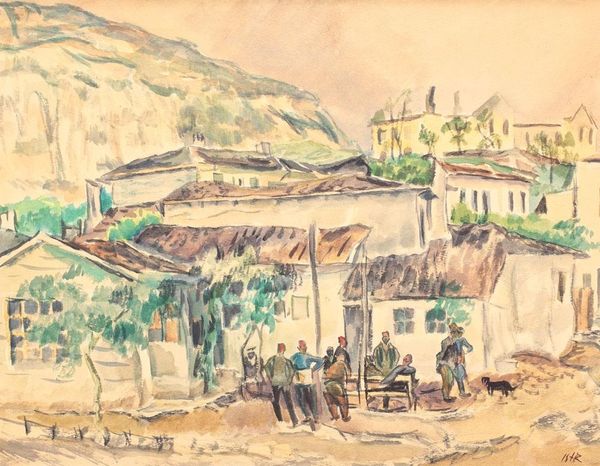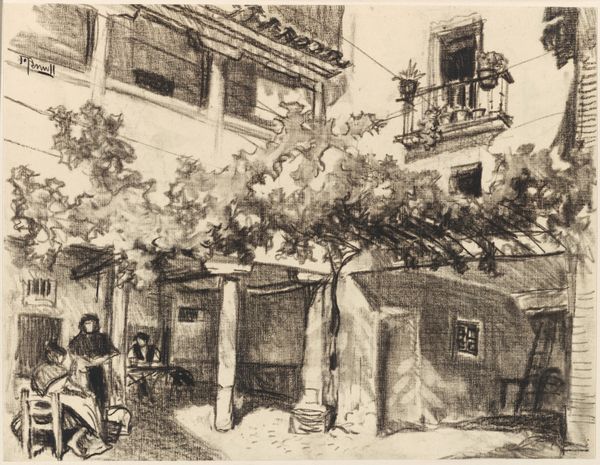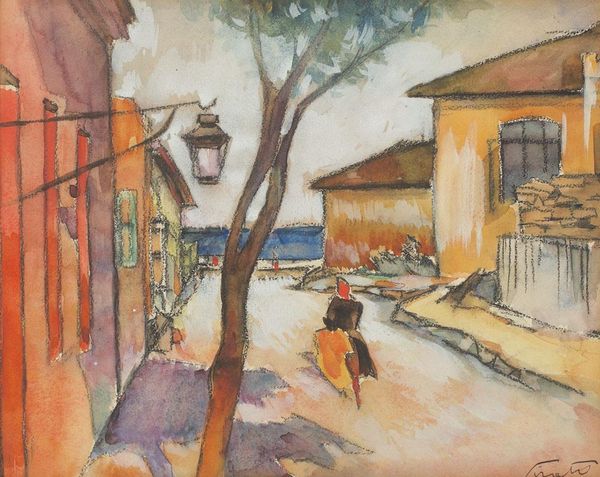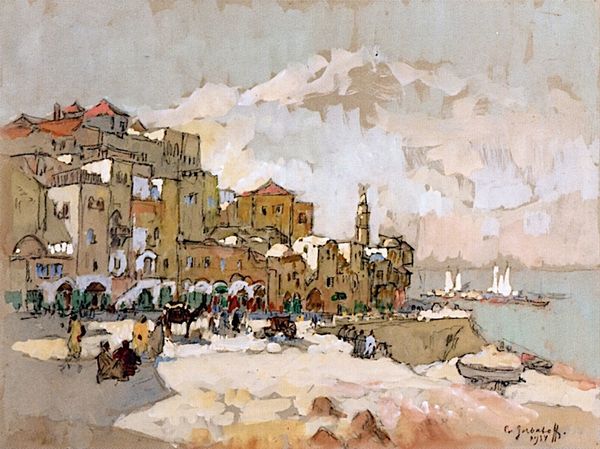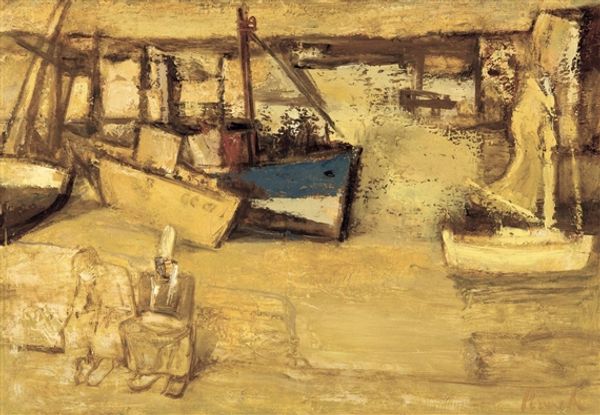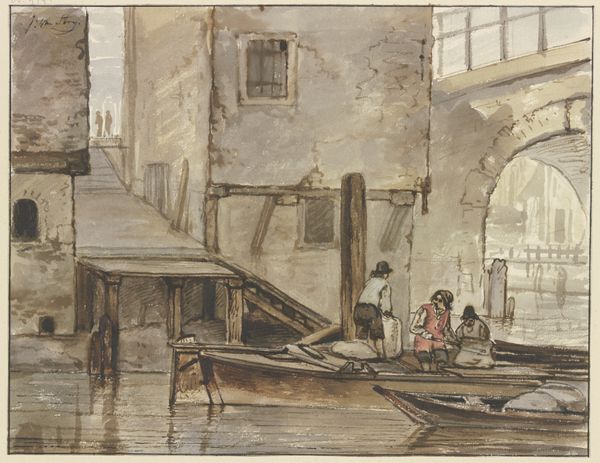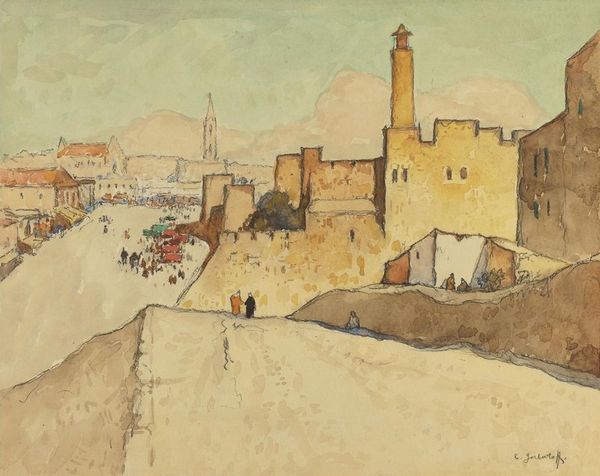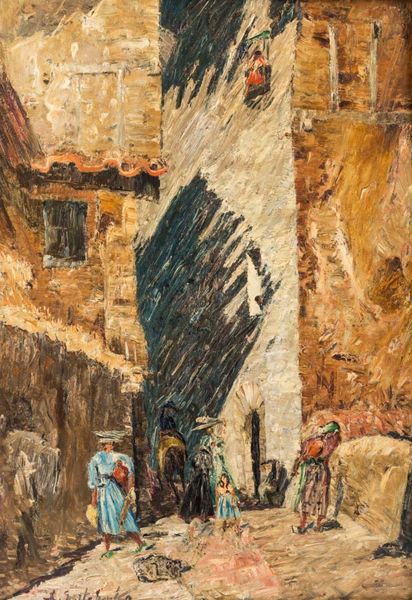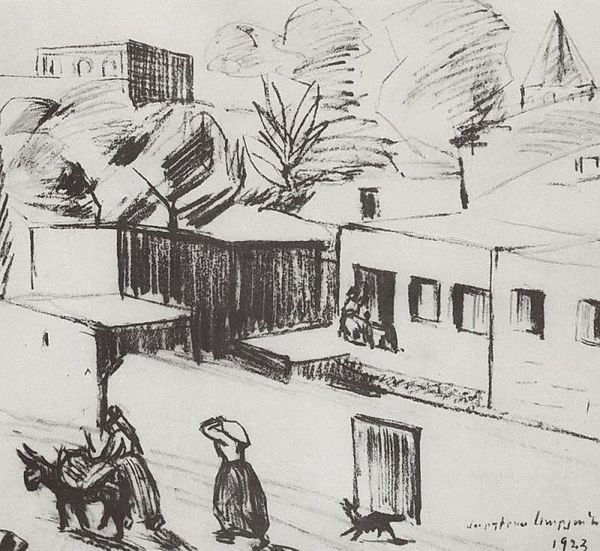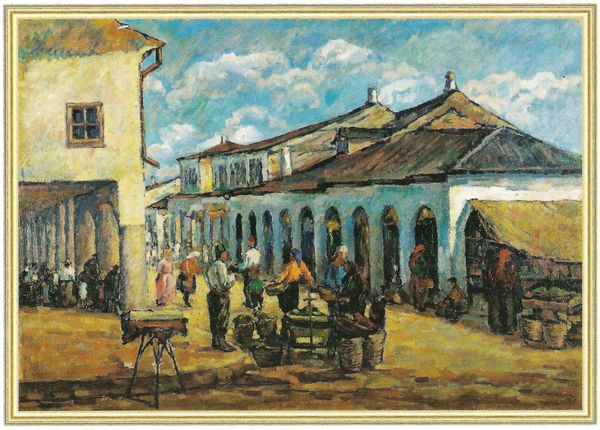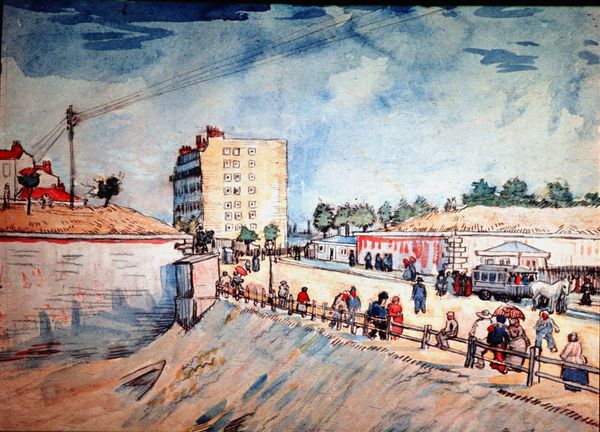
print, pencil
# print
#
landscape
#
coloured pencil
#
pencil
#
mixed medium
#
mixed media
#
watercolor
Copyright: Public Domain: Artvee
Curator: Here we have Helen Hyde’s “The Pink Fountain at Jalapa,” created in 1912. Hyde employed a mix of media, including colored pencil and printmaking techniques, for this piece. Editor: It feels like a hazy memory, doesn’t it? The soft colors and somewhat blurred lines create a dreamlike atmosphere. The composition, with the fountain taking center stage, really draws you in. Curator: Indeed. Hyde was significantly influenced by Japonisme, and her work often reflects the principles of Japanese woodblock printing. The flat perspective and the use of line to define forms are quite evident here. Consider how she simplified the architectural elements. Editor: I see what you mean. It's not a photographic representation, but more of an impression. What's intriguing is Hyde's position as a Western artist engaging with a distinctly Mexican scene. We must remember the complex power dynamics inherent in such artistic exchanges, as well as how art was being used to romanticize and simplify entire nations. Curator: A valid point. Hyde lived in Mexico for a period and was fascinated by the culture. From a formal perspective, it is fascinating to observe the application of a Japanese aesthetic to capture the essence of a Mexican setting, to view art as translation itself. Notice also the juxtaposition of geometric shapes with organic ones; the solid lines of the architecture contrasting the flow of garments and the movement of figures. Editor: I can't help but wonder how her presence impacted the local community. It’s easy to overlook the political context of an artwork such as this one. What sort of conversations was Hyde engaging in, and were those conversations adequately reflected through this composition? Curator: We might also consider what she chose *not* to depict, or what her stylistic choices might say about the culture. I'm thinking about that bright pink, especially—and what connotations a deliberately visible, distinctly non-naturalistic color might have to it, especially concerning orientalism. Editor: Perhaps Hyde's "Pink Fountain" provides a compelling snapshot of its time period as a visual marker. Regardless, examining Helen Hyde and her fountain in terms of history and the socio-political setting has made for a very interesting discussion, don’t you think? Curator: Absolutely. Analyzing how a work resonates formally with historical contexts illuminates unexpected interpretive routes, enabling a richer, layered understanding.
Comments
No comments
Be the first to comment and join the conversation on the ultimate creative platform.
